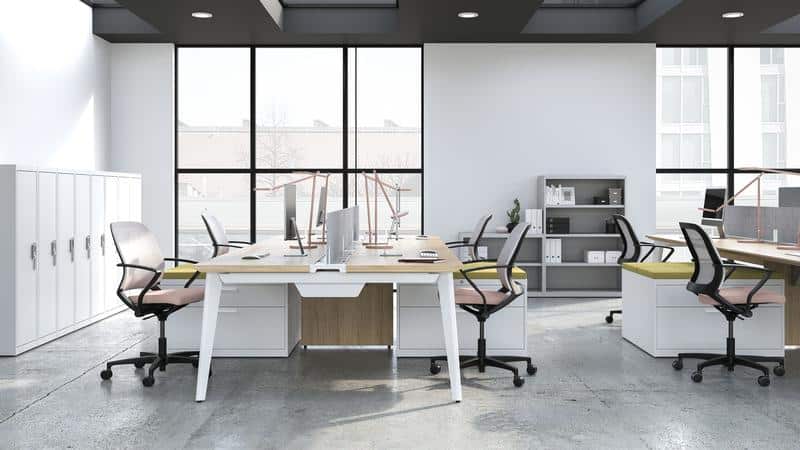Office layout plays a pivotal role in fostering or hindering team collaboration. A well-designed workspace can enhance communication, creativity, and productivity within teams, ultimately influencing overall business success.
Open vs. Closed Office Spaces
Open office layouts often facilitate spontaneous communication.
An open office design encourages employees to interact more freely, which can lead to innovative ideas and solutions. However, this layout can also result in distractions and noise, potentially diminishing focus. Balancing collaboration with personal space is crucial. Organizations must understand their team dynamics to determine if an open layout suits their needs. Studio Forma Interior Design emphasizes the importance of striking this balance to maximize collaboration.
Zoning for Collaboration
Creating distinct zones helps cater to various collaborative needs.
By implementing dedicated areas for brainstorming, social interaction, and focused work, companies can significantly enhance teamwork. These zones should reflect the types of collaboration required for different projects. Such zoning allows team members to choose spaces that suit their current tasks, fostering a more productive environment. Studio Forma Interior Design advocates for thoughtfully planned zones, ensuring that team collaboration flows seamlessly.
Flexibility in Office Design
Flexible workspaces can adapt to meet changing team dynamics.
A flexible office layout allows teams to reconfigure their workspaces based on project needs or team sizes. This adaptability can lead to increased employee satisfaction and creativity, as teams feel empowered to organize their environment. Incorporating movable furniture and reconfigurable spaces can support a culture of innovation. Studio Forma Interior Design recommends integrating flexibility as a core principle in office design to encourage continuous collaboration.
The Role of Technology
Technology integration within office layouts enhances collaboration.
Incorporating technology into office spaces, such as interactive screens and collaborative software, facilitates easier communication and resource sharing among team members. These tools are essential for remote teams and can bridge the gap between in-office and virtual collaboration. An effective technological setup allows employees to maximize their potential, regardless of their physical location. Studio Forma Interior Design underscores the necessity of planting technology at the heart of modern workspace design.
Personal Spaces and Team Collaboration
Incorporating personal spaces acknowledges individual work needs.
While collaboration is crucial, having personal workspaces is equally important for concentration and productivity. Employees benefit from having areas where they can retreat to focus on tasks without interruption. Integrating workstations that offer privacy within collaborative spaces can strike the right balance. Studio Forma Interior Design recognizes that respecting individual workflows fosters a more harmonious overall team environment.
Environmental Factors in Office Layout
Natural elements in office design can significantly impact team collaboration.
Incorporating natural light, greenery, and outdoor views can enhance employee mood and productivity. A well-thought-out environment can lead to increased creativity and reduced stress levels among team members. Studies have shown that biophilic design elements contribute to better collaboration by creating a more inviting atmosphere. Studio Forma Interior Design highlights the importance of considering environmental factors in creating spaces that promote social interactions.
Cultural Influences on Office Layout
Understanding team culture is vital in shaping office design.
Different organizations have varying cultural dynamics that can influence the effectiveness of an office layout. A design that resonates with the team’s values and work style can enhance collaboration and engagement. It’s essential for managers to consider their team’s cultural identity ahead of planning. Studio Forma Interior Design emphasizes the importance of creating a workspace that aligns with and supports the organization’s ethos.
In conclusion, the office layout is a critical factor in shaping team collaboration. By focusing on flexibility, zoning, technology integration, and understanding the cultural dynamics of a team, organizations can create an environment that promotes effective collaboration and drives success.

